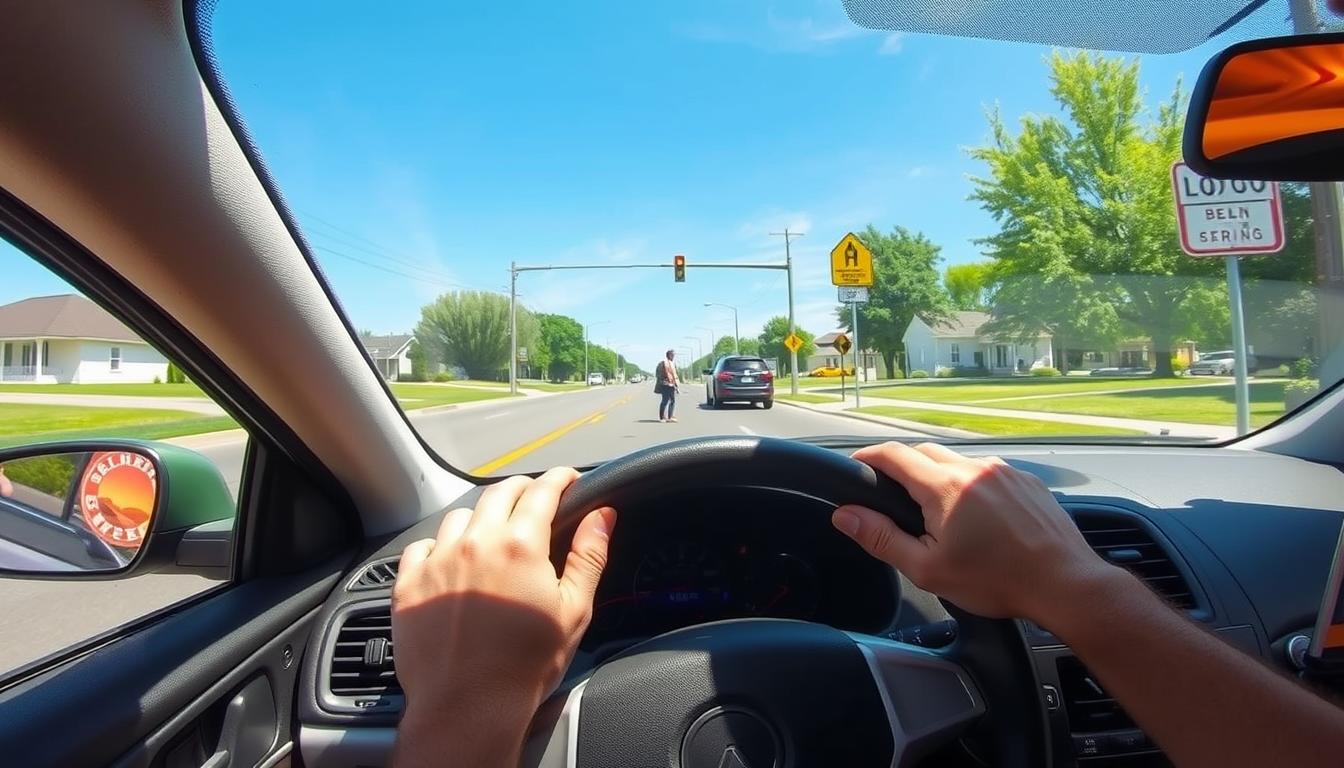Defensive Driving Tips for Beginners
Did you know that in 2020, vehicle crashes were the leading cause of death at work in the United States? These tragic events accounted for 37% of all on-the-job fatalities. That’s more than 1,700 lives lost.
This startling fact shows why being safe on the road is so critical. The good news is that you can dramatically lower your chances of being in an accident. It starts with a proactive approach to being behind the wheel.
This method is all about minimizing risks before they become emergencies. It means always scanning ahead and anticipating what other people might do. You learn to expect the unexpected.
Mastering these practical skills protects you, your passengers, and everyone else sharing the street. It creates a safer environment for our entire community. Plus, many insurance companies offer discounts for completing certified courses.
This guide will walk you through the core concepts and easy-to-use methods. You will gain confidence and peace of mind every time you get in your car.
Key Takeaways
- Vehicle accidents are a major cause of preventable workplace deaths.
- A proactive mindset is the foundation of safe vehicle operation.
- This approach focuses on anticipating potential hazards on the road.
- These practical skills benefit the driver, passengers, and the community.
- Insurance providers often reward drivers who complete safety courses.
- Building these habits increases confidence behind the wheel.
Understanding the Basics of Defensive Driving

The core of defensive driving lies in a simple but powerful shift in perspective. It’s about moving from a reactive to a proactive mindset on the road. This approach focuses on preventing problems before they can even start.
What Is Defensive Driving?
This method is fundamentally about anticipating potential hazards. Instead of just reacting to sudden stops or unpredictable behavior from others, you learn to see them coming. A key idea is that operating a vehicle is a team sport where everyone shares responsibility for safety.
Skilled motorists follow the rules and laws faithfully. They also adjust their actions to compensate for those who do not. This constant awareness and planning are what separate this approach from regular vehicle operation.
| Aspect | Regular Driving | Defensive Driving |
|---|---|---|
| Focus | Reactive to immediate events | Proactive risk prevention |
| Space Management | Maintains basic distance | Creates a safety buffer and plans escape routes |
| View of Others | Assumes others will follow rules | Expects mistakes and adjusts accordingly |
Benefits of Adopting a Defensive Driving Approach
The advantages are both immediate and long-term. You significantly lower your risk of accidents. Daily commutes become less stressful when you feel in control.
There are also financial perks. Many insurance companies offer discounts for completing certified programs. You can save on wear and tear by adopting smoother habits.
Ultimately, these skills make our roads safer for the entire community. When more people use these techniques, traffic flows better and collision rates drop for everyone.
Essential Defensive Driving Tips
Three fundamental practices form the bedrock of a secure journey: managing space, eliminating distractions, and communicating clearly. Mastering these areas dramatically reduces risk for everyone on the road.
Maintaining Safe Following Distances and Creating Space
A safe following distance gives you precious time to react. Use the simple three-second rule. Pick a fixed object ahead, like a sign.
- Watch the vehicle in front pass it.
- Count “one-one-thousand, two-one-thousand, three-one-thousand.”
- If you pass the object before you finish, you are too close.
Increase this space to four or more seconds in rain, heavy traffic, or fog. Also, position your car in the lane to create a cushion around you. This provides an escape route if needed.
Staying Focused by Avoiding Distractions
Anything that pulls your attention from the road is a danger. This includes your phone, food, or even conversations.
Hands-free does not mean risk-free. Your brain still gets distracted. Before you start the vehicle, set your GPS, music, and climate control. Put your phone on “Do Not Disturb” and out of reach.
Observing Traffic Laws and Using Signals Correctly
Traffic laws exist to create predictability. Following the speed limit ensures you maintain control and have adequate stopping distance.
Use your turn signals at least 100 feet before changing lanes or turning. Always check your blind spot first. Proper signaling tells other drivers your intentions, preventing confusion and crashes.
Applying Defensive Driving in Real-World Situations

Weather changes and other drivers’ actions create dynamic driving environments. Your ability to adapt determines your safety on the road. These practical techniques help you navigate challenging conditions confidently.
Adapting to Changing Road and Weather Conditions
Poor weather demands immediate adjustments. Reduce your speed by one-third during rain and cut it in half for snow. Ice requires even more caution, especially on bridges.
Brake gently on slippery surfaces. Modern vehicles with ABS need firm, steady pressure—never pump the brakes. This maintains control when stopping suddenly.
Use high beams on dark rural roads to double your visibility. Remember to dim them when other vehicles approach within 300 feet. This prevents blinding other drivers.
| Weather Condition | Speed Adjustment | Braking Technique | Light Usage |
|---|---|---|---|
| Rain | Reduce by 1/3 | Gentle, steady pressure | Low beams |
| Snow | Reduce by 1/2 | Very gentle pressure | Low beams |
| Dark Rural Roads | Moderate speed | Normal braking | High beams when clear |
Scan ahead 10-15 seconds to spot potential hazards early. This gives you precious time to react smoothly to changing conditions.
Managing Unexpected Driver Behavior and Hazards
Intersections account for over 80% of urban collisions. Slow down when approaching green lights. Look left, right, then left again before proceeding.
Large trucks have massive blind spots. If you cannot see the driver‘s face in their mirrors, they cannot see you. Always pass on the left and maintain speed when merging back.
When encountering erratic drivers, increase your following distance. Allow them to pass safely rather than engaging. Your safety comes first in all situations.
These techniques become most valuable when conditions are imperfect. Quick decision-making based on practiced skills prevents accidents.
Conclusion
Every journey offers a fresh opportunity to practice proactive road safety. These practical methods don’t require special training—anyone can start using them today to significantly reduce accident risk.
Taking personal responsibility for your security means you’re always prepared, regardless of other drivers’ actions. The techniques you’ve learned work together to create a comprehensive safety system.
Consistent practice turns these conscious efforts into automatic habits. The benefits extend beyond personal protection to include financial savings and community-wide road safety.
Consider a certified course for structured learning and potential insurance discounts. Each trip lets you refine these skills, making our roads safer for everyone.
FAQ
What is the main goal of a defensive approach to operating a vehicle?
How much space should I keep between my car and the vehicle in front of me?
What are some common distractions I should avoid while behind the wheel?
How can I safely handle a situation where another driver is behaving aggressively?
Why is it important to use turn signals even when no other cars are visible?
How should I adjust my driving for rainy or icy roads?

Adam Peter is a finance, travel, and automotive writer with over a decade of experience. He creates clear, practical content to help readers manage their money, explore the world with confidence, and make informed decisions about cars and travel gear. His work blends expert insight with real-world usefulness.




